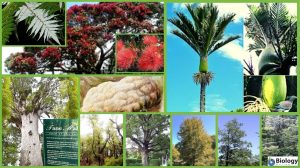Definition
noun
A biogeographic realm that covers Australia, New Guinea, New Zealand, and neighbouring islands
Supplement
Biogeographic realms are large spatial regions of the Earth’s land surface. Studying biogeographic realms leads to insight especially on biodiversity. It provides understanding on the extent of biodiversity and the factors that affect it. At present, there are about eight realms recognized by the World Wildlife Fund and they are divided according to their ecosystems sharing similar biological evolutionary history and distributional patterns of terrestrial organisms. The eight biogeographic realms are Nearctic realm, Palaearctic realm, Neotropical realm, Afrotropic realm, Indomalayan realm, Australasia realm, Oceanian realm, and Antarctic realm.
The Australasia realm (about 7.6 million square kilometres) includes Australia, New Guinea, New Zealand, eastern of the Indonesian archipelago, Bismarck Archipelago, Vanuatu, the Solomon Islands, and New Caledonia. This realm shares similar flora with the Antarctic realm. Nevertheless, the northern tropical islands share similar flora with the Southeast Asia. The Wallace Line serves as the biological dividing line from the Indomalayan realm of tropical Asia.1 This boundary (named after the British naturalist Alfred Russel Wallace) acts as a transitional zone between Asia and Australia.
See also:
Reference(s):
1 Australasian realm. Retrieved from ://en.wikipedia.org/wiki/Australasian-realm.







